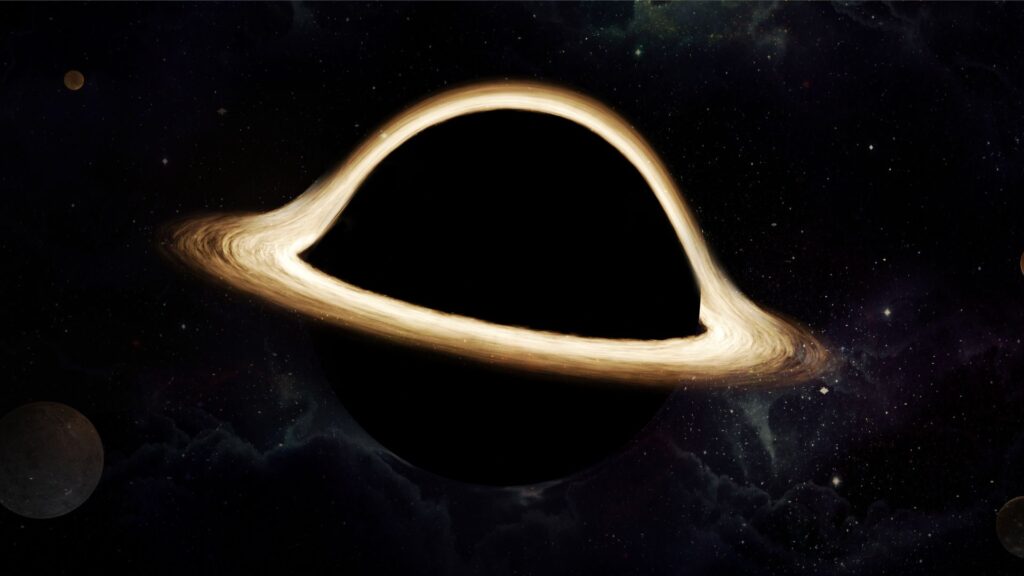Introduction: Unveiling the Mystery of Dark Matter
Dark matter, an elusive and enigmatic force, plays a pivotal role in our understanding of the universe. Though invisible and undetectable by traditional means, its gravitational influence is undeniable, shaping galaxies and binding the cosmos. This article embarks on a journey to unravel the secrets of dark matter, exploring its discovery, evidence, and the ongoing quest to comprehend its true nature.
Dark matter is a theoretical substance in the universe that is believed to account for a significant portion of the total mass. It’s called “dark” because it does not appear to interact with electromagnetic radiation, like light, making it invisible and undetectable by existing astronomical instruments.
What is dark matter?
Here’s what we currently understand about dark matter:
- Gravitational Effects: Dark matter is inferred from its gravitational effects on visible matter, radiation, and the large-scale structure of the universe. For instance, galaxies and galaxy clusters behave as if they contain far more mass than can be accounted for by visible matter alone.
- Rotation Curves of Galaxies: The rotation curves of galaxies, which show the velocity of stars as you move away from the center of the galaxy, don’t decrease in the way they would if only visible matter were present. This implies the presence of an unseen mass, which is attributed to dark matter.
- Cosmic Microwave Background (CMB): Observations of the CMB, the afterglow of the Big Bang, also support the existence of dark matter. The temperature fluctuations in the CMB provide evidence for the distribution of matter, including dark matter, in the early universe.
- Bullet Cluster: Observations of galaxy clusters such as the Bullet Cluster have provided direct evidence for the existence of dark matter. In these clusters, the distribution of dark matter has been inferred through gravitational lensing, where the path of light from distant galaxies is bent by the gravitational effect of dark matter.
- Nature and Composition: The exact nature and composition of dark matter are unknown. It’s believed to be non-baryonic, meaning it’s not made of the same stuff as ordinary matter (like protons, neutrons, and electrons). Theories and candidates include Weakly Interacting Massive Particles (WIMPs), axions, and neutrinos (although neutrinos are known to have too little mass to account for most of the dark matter).
- Search for Direct Detection: Numerous experiments are underway to detect dark matter particles directly. These experiments often take place deep underground to shield them from cosmic rays and other background noise.
- Role in Cosmic Structure Formation: Dark matter is thought to play a crucial role in the formation of galaxies and the structure of the universe. It acts as a gravitational “scaffold” around which visible matter congregates.
It’s important to note that dark matter is one of the biggest mysteries in modern astrophysics. While its effects are observed, its direct detection and the understanding of its nature remain elusive.
Understanding Dark Matter: The Basics
Dark Matter Defined:
Dark matter, a term coined to describe the unseen matter in the universe, remains one of the greatest mysteries in modern astrophysics. Despite being invisible and not interacting with electromagnetic forces like traditional matter, its gravitational pull is a fundamental force that shapes the structure and behavior of galaxies.
The Role of Dark Matter:
Comprising about 27% of the universe’s matter-energy composition, dark matter significantly outweighs visible matter, playing a crucial role in the cosmic balance.
Historical Insights: The Discovery of Dark Matter
The Path to Discovery:
The journey to understanding dark matter began with early theories and observations by pioneers like Lord Kelvin, Henri Poincaré, Jan Oort, and Fritz Zwicky. Their work laid the foundation for the dark matter hypothesis, transforming our perception of the universe.
Galactic Mysteries: Evidence for Dark Matter’s Existence
Evidence in the Stars:
The existence of dark matter is inferred from three key phenomena: the unexpected rotation speeds of stars in galaxies, the bending of light (gravitational lensing), and patterns in the Cosmic Microwave Background (CMB).
Theoretical Explorations: What Could Dark Matter Be?

The Quest for Answers:
Scientists propose various theories to explain dark matter, including Weakly Interacting Massive Particles (WIMPs), axions, and sterile neutrinos. Each theory offers a unique perspective on the potential composition of this mysterious substance.
Modern Research: The Quest to Understand Dark Matter

Cutting-Edge Exploration:
Today’s researchers use advanced methods and facilities like CERN and the Large Hadron Collider to probe the depths of dark matter’s mysteries, hoping to unlock its secrets.
Dark Matter vs. Dark Energy: Clarifying the Confusion

Separating Two Cosmic Enigmas:
Though often mentioned together, dark matter and dark energy are distinct entities. Dark matter, as discussed, contributes to the gravitational forces in the universe. In contrast, dark energy is a mysterious force driving the universe’s accelerated expansion. Together, they form the backbone of our current understanding of the cosmos.
Dark Matter in Popular Science and Culture

Dark Matter’s Cultural Impact:
Beyond the realm of science, dark matter has captivated the imagination of popular culture. It’s a recurring theme in science fiction literature and films, symbolizing the unknown and the unexplored. Dark matter’s enigmatic nature continues to inspire curiosity and wonder.
The Enigmatic Nature of Dark Matter: Expanding Our Understanding

Dark Matter and the Structure of the Universe:
Understanding dark matter is key to comprehending the universe’s structure. Its gravitational effects are essential in the formation of galaxies and large-scale structures in the cosmos.
The Invisible Influence: How Dark Matter Shapes Galaxies

Galactic Architect:
Dark matter, although invisible, plays a critical role in shaping the galaxies. Its gravitational pull dictates the motion of stars and the overall structure of galaxies, challenging our understanding of physics and astronomy.
Chasing Shadows: Techniques for Detecting Dark Matter

Innovative Detection Methods:
Scientists employ various methods to detect dark matter indirectly, including observing the effects of gravitational lensing and studying galaxy rotation curves. These methods have opened new avenues in the study of astrophysics.
The Dark Matter Debate: Controversies and Challenges

Scientific Controversies:
Despite its acceptance in the scientific community, the concept of dark matter is not without its controversies. Some scientists propose alternative theories, such as modifications to gravity, to explain the anomalies attributed to dark matter.
Dark Matter Research: Pioneers and Progress

Key Figures in Dark Matter Research:
Highlighting the contributions of scientists like Vera Rubin, whose work on galaxy rotation curves was pivotal in dark matter research, and other notable figures who have advanced our understanding of this mysterious substance.
Future Frontiers: The Next Steps in Dark Matter Research

What Lies Ahead:
The future of dark matter research is exciting and full of potential. With advancements in technology and observational techniques, scientists are closer than ever to unlocking the secrets of dark matter and, by extension, the universe.
FAQs: Addressing Common Questions About Dark Matter
Your Questions Answered:
- What exactly is dark matter? Dark matter is an invisible substance that exerts gravitational force, essential for the formation and structure of galaxies.
- Can we see or detect dark matter directly? No, dark matter cannot be observed directly as it does not interact with light or electromagnetic forces.
- Why is dark matter important in astronomy? Dark matter is crucial for understanding the universe’s structure, evolution, and the behavior of galaxies.
Conclusion: The Future of Dark Matter Research

Looking Ahead:
As we continue to probe the universe’s depths, the mystery of dark matter remains at the forefront of cosmic research. Its invisible presence, a silent architect of the cosmos, challenges and inspires scientists. The quest to understand dark matter is not just a journey through space but a voyage into the unknown realms of human knowledge and imagination.
As we delve deeper into the mysteries of the cosmos, various theories have emerged to explain the fundamental forces and phenomena at play. One such intriguing perspective is the L-Force Theory, which proposes a unique approach to unifying light in the cosmos.
For a comprehensive exploration of this theory and its implications, consider reading the detailed article available at Exploring the L-Force Theory: Unifying Light in the Cosmos, which offers in-depth insights into this fascinating concept.

